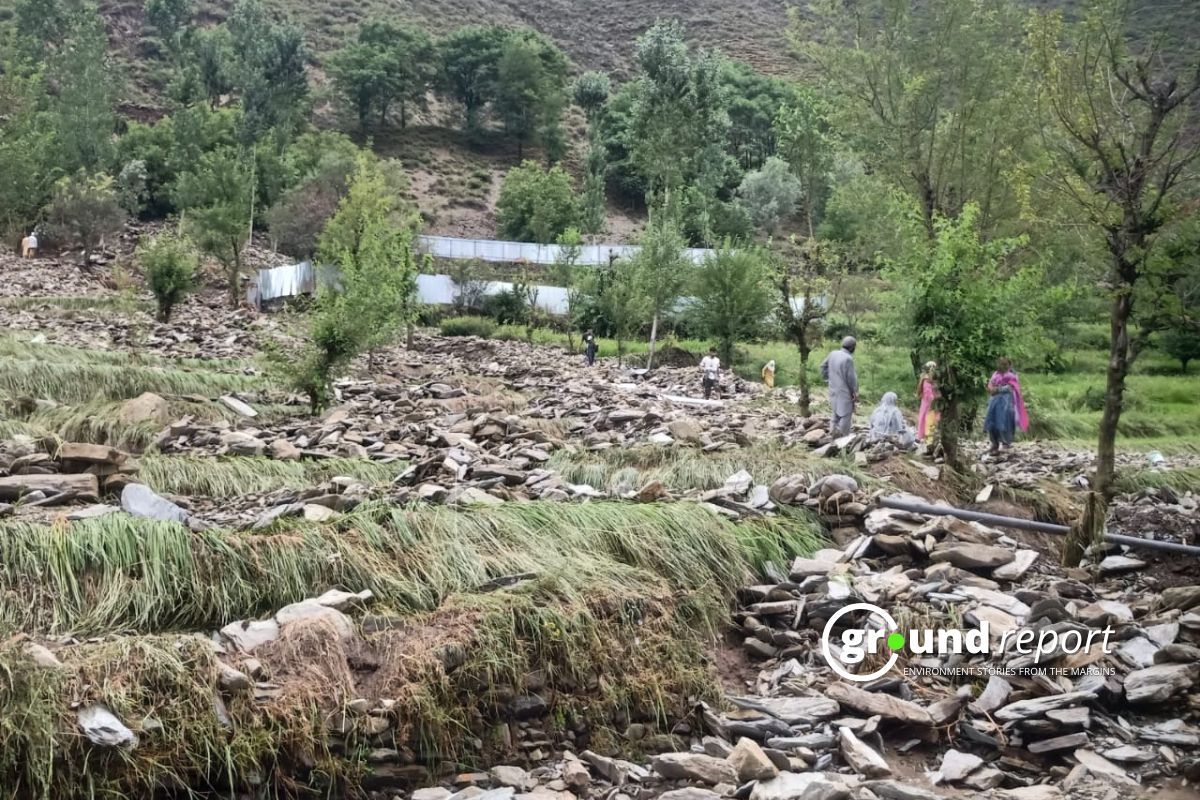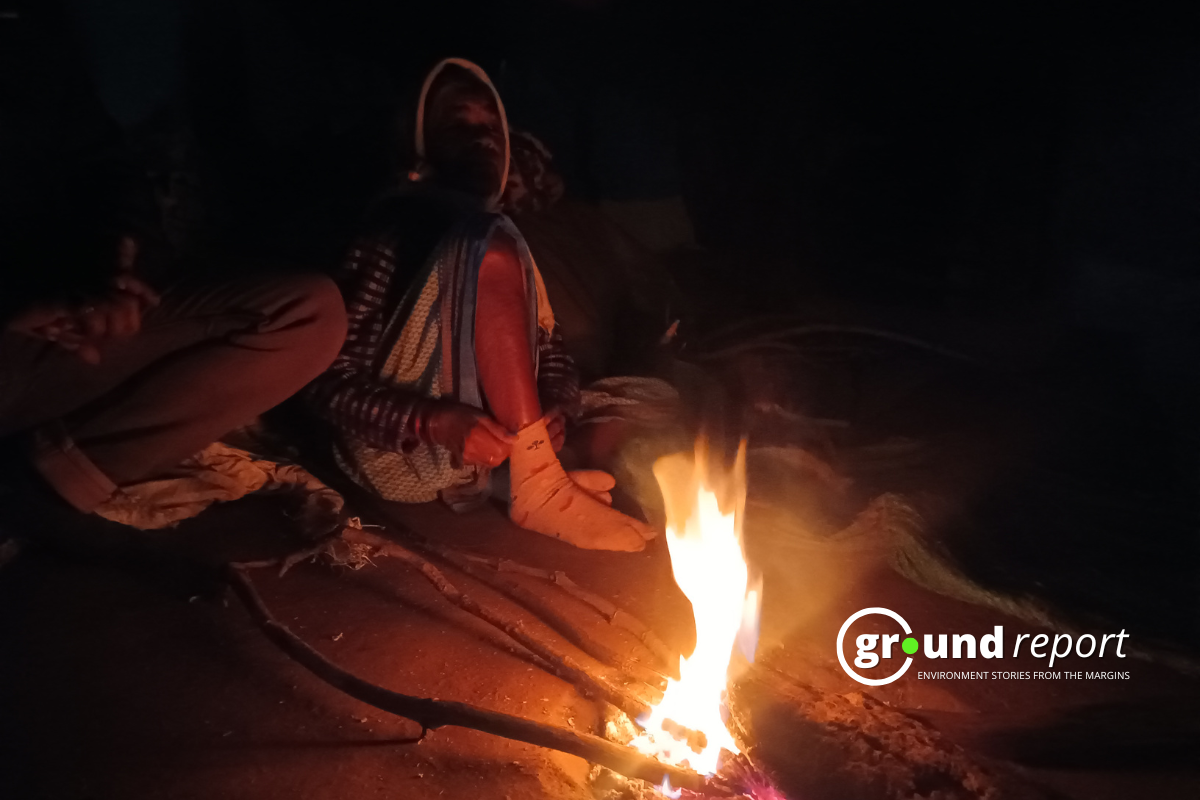Every year in April-May, more than two lakh people from the nomadic Gujjar tribe and Bakarwal tribes arrive in the meadows of Kashmir and parts of Ladakh from Rajouri and Poonch districts and other areas of the Jammu region with their flocks of cattle and sheep. Tourists are unaware of such areas where these Gujjars live. Under the recommendations of locals, Ground Report team visited the Upper areas of Sonamarg to look at and understand how the Gujjar community lived their life.
Bashir Ahmad Khan, 57, a Gujjar from Mansar Udhampur said-
“In this lockdown, we neither have access to veterinarians nor medicines, and our sheep and goats can’t bear the heat, they suffer from high fever, for people like us we only have one option to go and live somewhere in the mountains”.
Khan is seen grazing his cattle, he says “Humein Humare Jannwaron se bohat Mohabbat hai Kaise aur cheez se nahi” (we love our animals more than anything else. Bashir, a van Gujjar, who has been doing the journey since his childhood, tells about how you can leave your cap in the settlement and will find it in the exact place the following year’.
Khan added,
“if a buffalo becomes ill or injured, the whole family fret with concern till the animal gets better and when a buffalo dies (a loss more personal than financial for Gujjar), the animal is mourned almost like one would mourn a family member”.
He added, “cows, buffaloes, goats, and sheep have always been a critical resource for us, providing them with dairy proteins in their diet, labour, and manure for their fields and yes, surplus income through the sale of milk and its by-products”.
He said, “there is no fear of any theft, any animals in the forest, added each member of the tribe treks to the mountains during the summer and makes the same journey down before the snowfall”.
Khan further said,
“As the winter approaches, we abandon these little Deras and make their way to the lower plains before they embark on this journey, this is done to prevent Dera from any damage caused during the snowfall”.
No education
Unseasonal snowfall and heavy rains put the lives of nomadic Gujjars and Bekarwals at high risk, it is when Gujjar face an acute shortage of medicines, food, and blankets.
Bashir speaking to Ground Report said–
“not only health but even education of Gujjar children is affected as we are usually on the move, the government had set up mobile schools for Gujjar in which a teacher who belongs to the community would travel with the tribe and teach the children. These mobile schools exist only on papers”
Khan said “Education is the best way for the development of humans for survival and development. Education also plays a vital role in the development of human beings and their society which enhances social, cultural and economic development” added “Some communities are subsisting by hunting and gathering, teaching their children to make weapons girls collect food from forests.
“There are hardly any facilities in these schools. No matting to sit on, no tents for protection from rain and sunshine, no blackboards, and no uniforms. A couple of texts books per student and an attendance register with the teacher, Khan said while speaking to Ground Report
They suffered in the past due to hard geographical conditions and presently suffering due to backwardness and negligence of the governments and it seems that due to the lack of appropriate policies and provisions for them, they will suffer in future too.
However, the number of out-of-school children continues to be several million mainly due to lack of basic educational facilities.
India is home to almost more than half of the world’s tribal population
According to the Indian Ministry of Tribal Affairs, 2004, India is home to almost more than half of the world’s tribal population. Over 84 million people belonging to 698 communities are identified as members of scheduled tribes with the total population of 104,281,034 Scheduled Tribes constitute 8.6percent of India’s total population (Census 2011).
These tribal communities in India are staying over around 15 percent area of the country, out of which most of the area is hilly and geographically hard to survive. Most of the scheduled tribes of India are backward in every aspect of like economically, socially, and educationally. In the social system of the tribes, there is wide variation all around. Only the common thing among tribes is their backwardness in every aspect.
Keep Reading
Indian agriculture household earns just Rs. 10,218 in a month: Govt
Post-harvest losses still high, reveals data shared in Lok Sabha
Khadi Haat village’s power-free wastewater treatment solution and more
Support us to keep independent environmental journalism alive in India.
Follow Ground Report on X, Instagram and Facebook for environmental and underreported stories from the margins. Give us feedback on our email id greport2018@gmail.com.
Don’t forget to Subscribe to our weekly newsletter, Join our community on WhatsApp, and Follow our YouTube Channel for video stories.






